Best Baseball Gloves for 6-Year-Olds
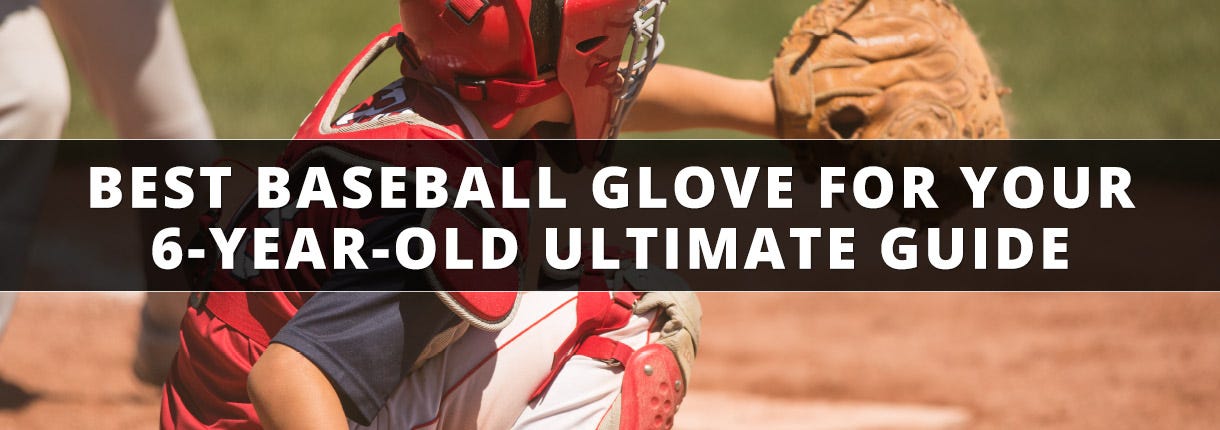
At 6 years old the player is just beginning their baseball journey. These are the times when they develop a love of the game and having the right gear can help them build a passion for years to come. Having the right baseball glove can significantly impact performance and enjoyment of the game. With numerous options available, navigating the selection process may seem daunting. To ensure you make an informed choice, it's essential to consider factors such as size, material, and durability. A properly fitted glove not only enhances comfort and confidence but also aids in skill development, fielding efficiency, and injury prevention. This guide aims to simplify the selection process, providing step-by-step instructions on how to choose the perfect glove for your young player. Additionally, we'll offer expert recommendations to help you narrow your options, ensuring you find the ideal glove that meets your child's needs and preferences. Explore our full range of youth baseball gloves to discover the perfect fit for your budding athlete.
In this article, we will cover:
Understanding Baseball Glove Size for 6-Year-Olds
The correct glove size is vital for young players' comfort, control, and confidence on the field. Most importantly, size has the greatest impact on a player’s safety and overall enjoyment. A glove that is too small can cause injury to the hand and fingers. A glove that is too big can cause injury to the wrist as the glove snaps backward. A properly fitting glove enhances a player's catching, fielding, and throwing abilities. This improved control fosters confidence, allowing young players to approach the game with enthusiasm and perform at their best without hesitation.
| Age | Catcher | First Base | Second Base / Short Stop | Third Base | Pitcher | Outfield |
| Under 7 | 29.5" - 30" | 11.5" | 8" - 10" | 8" - 10.5" | 8" - 10.5" | 9" - 11" |
| 8 - 10 | 30" - 32" | 11.5" - 12" | 10.5" - 11.25" | 10.5" - 11.5" | 10.5" - 11.5" | 10" - 12" |
When sizing a glove for your child, consult this chart to ensure you get a size that will allow your child to be successful on the field. When getting your new glove, ensure it fits snuggly on the hand, without being too tight on the fingers and wrist. Also, make sure that the glove is not too long or heavy to hinder the player when they are running or making plays.
Now that you know what size glove to get, head over to shop our youth baseball gloves and find your next glove! If you would like to learn more about glove size, consider looking at How to Size a Baseball Glove for a Kid.
Types of Baseball Gloves for 6-Year-Olds
Infield Gloves/Outfield Gloves
In the early ages of youth baseball, many players play multiple positions so infield and outfield-specific gloves are not required. Therefore, there are no youth outfield-specific models as players use the same glove in the infield and outfield. Manufacturers make these gloves with specific features making them perfect for young hands. On youth gloves, the priority is lightweight, ease of break-in, and comfort. For extremely young players, gloves often feature the basket weave web. This web is one of the easiest to close because of the flexibility within the web design. This is also one of the most secure webs, not having any openings for the ball to go through. These make it great for baseball players just starting their playing journey. Once players get a little older, youth gloves are available in a variety of web designs such as I-webs and H-webs. These are the most common web types and are named after the strips of leather that form the shape of an I and an H on the back of the web. For more information on the different web types, consult our Baseball Glove Buying Guide.
Catcher’s Mitts
Youth catcher's gloves, also known as mitts are the most specialized gloves on the baseball field. They differ from regular fielder’s gloves in several ways. For example, they are measured by their circumference, whereas all other gloves are measured by length. A catcher's glove is typically 31 to 34 inches. For sizing information, view our Baseball Glove Size Guide. Catcher's gloves are also heavily padded, especially on the thumb and palm area to absorb the impact of high-velocity pitches and protect the catcher's hand during the game. They also have closed webbing with a deep pocket to ensure the ball stays secure at all times. Youth models often feature a velcro strap to make them adjustable to different-sized hands. To view our complete selection of youth catcher’s gloves, click here.
First-Base Glove
Youth first base gloves are for young players who want the advantages of a specific first base glove but might not be at the age or skill level for an adult first base glove. Youth first-base gloves have a similar design to their adult counterparts while still retaining the defining characteristics of youth gloves. This allows the youth player to excel at the first base position. Like an adult first base glove, the smaller youth version has a continuous round edge to improve the chances of scooping balls thrown in the dirt. This rounded edge serves as a funnel, guiding any off-target throws directly into the glove's webbing. These gloves have extra padding to protect the hand from the sting of hard-thrown balls. Youth first base gloves are typically 11 to 12 inches long. Baseball Monkey is proud to offer a wide variety of youth first-base gloves. You can shop them all by clicking here.
Material Quality
On youth gloves, the priority is on lightweight, ease of break-in, and comfort. Therefore manufacturers forgo the heavy leather found on adult gloves and instead opt for lightweight leather and synthetic materials. For leather, most youth gloves are cowhide which is lightweight, performs well, and is often “pre-oiled” to reduce break-in time. As players mature and develop their skills, the velocities of throws and hits increase. It can be helpful to have a stronger and more durable glove to keep players safe and successful on the field.
Comfort and Fit
When fitting your child for a glove, pay attention to how loose or tight it is on the hand and wrist. A glove that is too tight can cause injury to the hand when catching the ball. Similarly, a glove that is too big or too long can cause injury to the wrist as the glove snaps back when catching. The glove should be comfortable for the player. Choosing a glove with an adjustable wrist strap can be a great option for younger players. For more information on proper sizing, consult our Baseball Glove Size Chart.
Glove Webbing Types
For extremely young players, gloves often feature the basket weave web. This web is one of the easiest to close because of the flexibility within the web design. This is also one of the most secure webs, not having any openings for the ball to go through. These make it great for baseball players just starting their playing journey. Once players get a little older, youth gloves are available in a variety of web designs such as I-webs and H-webs. These are the most common web types and are named after the strips of leather that form the shape of an I and an H on the back of the web. For more information on the different web types, consult our Baseball Glove Buying Guide.
Adjustment Features
Many of the gloves for the youth ages have specific features to make them easier to use for young hands. This included things like adjustable wrist straps and notches in the heel of the glove to make the glove easier to close for small hands.
Best Baseball Glove for a 6-Year-Old
Best Overall
Marucci Swift 10" Youth Baseball Glove - 2025 Model
The Marucci Swift 10" Youth Baseball Glove - 2025 Model features an S Type fit with adjustable thumb and pinky loops for a secure feel. Its I-Web design combines a lightweight synthetic shell back with a durable leather palm, while plush fleece and oil tack linings enhance comfort. With a tapered fit and deep pocket for better control, this game-ready glove is perfect for all positions.
Best Budget Friendly
Rawlings Sure Catch Carlos Correa SC105CC 10.5" Youth Baseball Glove - 2025 Model
The Rawlings Sure Catch Carlos Correa SC105CC 10.5" Youth Baseball Glove features Correa’s signature, a durable all-leather shell, and a Sure Catch heel cutout for easy closure. With cushioned finger linings and an adjustable back, it offers comfort and a secure fit for young players.
Best Premium
Shoeless Joe Junior Model 1000JRIW 10" Baseball Glove
The S Type Fit Youth Baseball Glove features a traditional hand stall with adjustable loops, a full-grain cowhide leather shell, and reinforced lightweight panels for durability. Designed for young players, it includes an EZ Flex notch for easier closure, a true-feel synthetic palm lining with added cushioning, and a microfiber finger lining with memory foam for superior comfort and control.
Best First-Base
Rawlings Select Pro Lite Freddie Freeman SPL115FF 11.5" Youth First Base Mitt - 2025 Model
The Rawlings Select Pro Lite Freddie Freeman SPL115FF 11.5" Youth First Base Mitt is perfect for young players looking to field like their favorite star. Featuring a single-post double-bar web, it provides a secure fit for easy scooping and picking. The Youth Pro Taper Fit with lower finger stalls ensures a snug, adjustable feel for growing hands. With a sleek gray and blue Dodger-inspired design, this mitt is built for style and performance on the field!
Best Catcher’s
All-Star Future Star 31.5" Youth Baseball Catcher's Mitt
Lightweight and easy to break in, this glove is constructed from dual-stitched durable leather, and reinforced with All-Star's Pro Guard Padding, this glove is light and easy to manipulate, without sacrificing protection or durability.
Care and Maintenance Tips
Here is a quick list of how to care for and maintain your new glove. For more detailed information, consult our Glove Care Complete Guide.
| How to Clean Your Glove | |
| Step 1 |
|
| Step 2 |
|
| Step 3 |
|
FAQs
What is the difference between youth and adult baseball gloves?
In many ways, youth baseball gloves are scaled-down versions of adult baseball gloves since there are many similarities in the overall construction and design. However, manufacturers include special features in youth gloves that allow the younger player to be successful on the field. Most notably, youth gloves will be smaller than adult gloves to accommodate the smaller size of the player. They are made of lighter materials than adult gloves such as synthetic leather to help reduce weight and make the glove easier to use for new players. Youth gloves often feature an adjustable wrist strap to keep the glove secure on the hand while accommodating many different-sized hands. Some manufacturers even include a V-notch in the heel of the glove to make the glove easier to close for smaller hands.
How to break in a new baseball glove?
The best way to break in a glove is to use it! Many youth gloves do not require much break-in, but if you decide that you need a little extra, consider checking out our Glove Break-In Guide.
Leather vs synthetic gloves: Which is better?
The answer is, it depends. On youth gloves, the priority is on lightweight, ease of break-in, and comfort. Therefore manufacturers forgo the heavy leather found on adult gloves and instead opt for lightweight leather and synthetic materials. For leather, most youth gloves are cowhide which is lightweight, performs well, and is often “pre-oiled” to reduce break-in time. As players mature and develop their skills, the velocities of throws and hits increase. It can be helpful to have a stronger and more durable glove to keep players safe and successful on the field.
Are there gloves specific for left-handed players?
Yes, when shopping for a left-handed player be sure to select the option for the left-handed throw.
Can the same glove be used for different positions?
In youth baseball, many players play multiple positions so position-specific gloves are not a requirement. Therefore, there are no youth outfield-specific models. Players will use the same glove across these positions. However, for positions such as catcher and first base a specialized glove is available. Manufacturers make these gloves with specific features to make them easier for youth hands. These features include adjustable wrist straps, softer leather, and notches in the heel of the glove to make it easier to close.
How often should I replace my child’s baseball glove?
It is more likely that a 7-year-old will outgrow their glove long before the glove gets worn out. The lifespan of a glove depends on many factors such as use and maintenance. You will know that a glove needs to be replaced when it is too small, loses its shape, or the padding is gone in the palm.
Can a baseball glove be too big for a child?
Yes, a glove can be too big. Consult our glove sizing chart for more information.


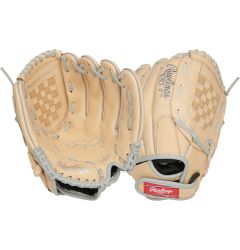
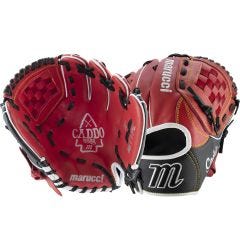
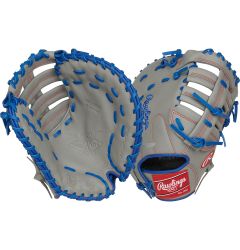
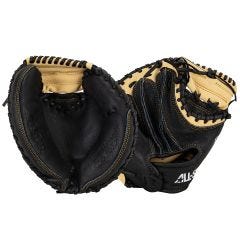


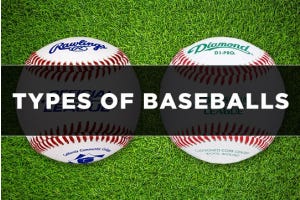

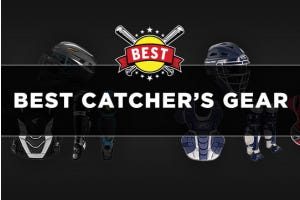
Login and Registration Form
or
Create an account